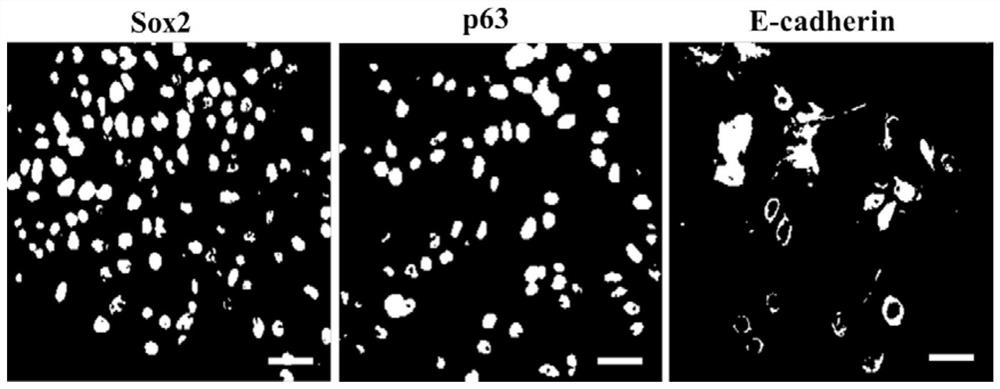Method for efficiently inducing advanced branched pulmonary organs in vitro, experimental model and compound combination
A branched, organoid technology, which can be used in the screening of compounds, biochemical equipment and methods, and the determination/inspection of microorganisms. structure and other problems to achieve the effect of reducing the number of mice, improving physiological functions and pathological changes, and reducing the cost and time of experiments
- Summary
- Abstract
- Description
- Claims
- Application Information
AI Technical Summary
Problems solved by technology
Method used
Image
Examples
Embodiment 1
[0037] Example 1 compound combination
[0038] 1. Expansion medium (i.e. 2D medium)
[0039] Configure the expansion medium according to the composition list shown in Table 1
[0040]
[0041] Specifically, in one embodiment of the present invention, the Ham's F12, DMEM, and penicillin-streptomycin mixed solution are all purchased from Life Technologies Company, the article numbers are 31765-092, 11330032 and 15140-163 respectively, and FBS is purchased from Biowest Company , the article number is S1580-500, GlutaMAX and HEPES are purchased from Gibco, the article number is 05966L17 and 15630-080, NaHCO 3 Purchased from Fisher Company, the article number is S233-500, EGF is purchased from Corning Company, the article number is 354001, and Insulin is purchased from Sigma Company, the article number is I6634. Of course, those skilled in the art can also use reagents produced by other companies with the same efficacy to configure the expansion medium of the present applicati...
Embodiment 2
[0050] The present invention induces digestive airway epithelial tissue into mouse lung organoids with advanced branching structure and terminally differentiated ciliated cells as shown in figure 1 As shown, specifically:
[0051] 1. Obtaining Digested Airway Epithelial Tissue
[0052] The present invention uses C57 BL / 6J female mice 8 weeks after birth as experimental materials, and the process of obtaining airway epithelial tissue adopts an anatomical conventional method, and the specific steps are as follows:
[0053] 1.1 Anesthetize the mouse with 10% chloral hydrate intraperitoneally, fix the limbs of the mouse on the operating table with pins, cut the chest and neck of the mouse, take out the airway tissue, and put it in a pre-cooled mixture containing 1% penicillin and streptomycin solution in 1x PBS.
[0054] 1.2 Under the dissecting mirror of the stereoscope, remove the muscle and connective tissue adjacent to the airway tissue with ophthalmic surgical forceps, cut...
PUM
 Login to View More
Login to View More Abstract
Description
Claims
Application Information
 Login to View More
Login to View More - R&D
- Intellectual Property
- Life Sciences
- Materials
- Tech Scout
- Unparalleled Data Quality
- Higher Quality Content
- 60% Fewer Hallucinations
Browse by: Latest US Patents, China's latest patents, Technical Efficacy Thesaurus, Application Domain, Technology Topic, Popular Technical Reports.
© 2025 PatSnap. All rights reserved.Legal|Privacy policy|Modern Slavery Act Transparency Statement|Sitemap|About US| Contact US: help@patsnap.com



